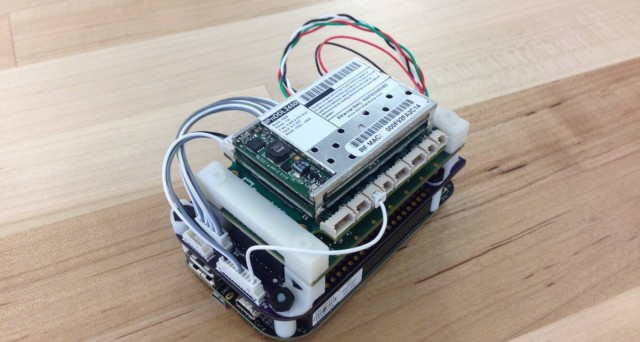and the University of Minnesota College of Science and Engineering have developed a high-precision autopilot toolkit for use with unmanned aerial systems (UAS). The toolkit’s hardware and software are now available under a broad open-source license.
The UAS Autopilot Development Toolkit integrates into current and future UAS platforms and is designed to enable researchers to quickly prototype and deploy advanced and non-traditional navigation, guidance, and control technologies. The collaborative effort provides the open-source community with a professional-grade, high-performance flight control system that is scalable, extensible, and cost-efficient.
“This project is an excellent example of collaboration between the University of Minnesota and industry. From a technical perspective, performance is outstanding. But, we’ve also created a product that is valuable not just to our business, but to the broader community working to develop the next generation of capabilities for unmanned systems,” said Sentera CEO Eric Taipale.
The team worked with industry and research partners to define the system architecture for a next-generation flight control system. Sentera and the University of Minnesota worked together to design, develop, and create a working UAS flight control system based on this architecture. This software is hosted on an inexpensive, widely-used single board computer and is currently being integrated into a University of Minnesota research platform.
“The University of Minnesota and Sentera have a long history of collaborating on research and technology development,” said Brian Taylor, director of the Uninhabited Aerial Vehicle Laboratories at the University of Minnesota. “Creating a high-quality, open-source autopilot was a natural fit for our organizations. It provides a platform for groundbreaking research at the University and other research institutions along with a potentially rapid path to commercial application.”
The project was supported by the Minnesota’s Discovery, Research, and Innovation Economy (MnDRIVE) initiative, a landmark partnership between the University and the state of Minnesota that aligns areas of University research strength with the state’s key and emerging industries to address grand challenges. The University of Minnesota’s UAV lab conducts flight research on navigation, guidance, and flight control systems to improve the safety and fuel efficiency of future commercial aircraft and UAVs.
To find out more about the project or download the software, visit the Sentera GitHub website.
About Sentera
Sentera is a designer, developer, and manufacturer of sensors, software, and drones. Industries include agriculture, infrastructure, and public safety. Sentera has more than 200 years of combined experience with sensors, software, drones, data management, and engineering solutions. In one year, Sentera’s equipment collected 16 million images, covered 15 million acres, and gathered 175 terabytes of data from 8,000 flights.
About the University of Minnesota College of Science and Engineering
The University of Minnesota College of Science and Engineering is ranked among the top engineering and science academic programs in the country. The college includes 12 academic departments offering a wide range of degree programs at the baccalaureate, master’s, and doctoral levels. Researchers within the college are on the leading edge of finding ways to solve some of the world’s greatest problems.
Source: Press Release

